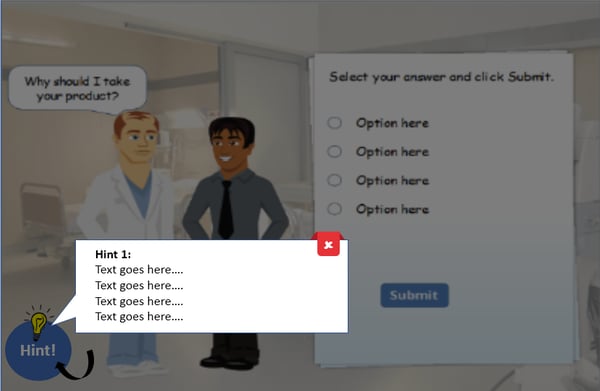5 Tips to Involve your Learners in E-learning Courses

Let me ask you a question here before I start. How do you involve learners? Do you simply follow the mantra, “Present the basics first-Detail them next-Tell what to do-Finally, have them do it?”
Well, if your thought process is the same as the mantra, did it ever strike you if your learners are actively involved in your course? Apparently, most of the times, the answer is a big “No-No.”
Can we come to an agreement here saying that we should be developing realistic practice activities, which would let the learners take the same decisions that they would be doing in their jobs? I think we should be, because as adults, leaners will have information gained through their job routine. Therefore, it does not make sense presenting the content beforehand and checking their learning immediately through knowledge check activities.
I bring to you 5 valuable tips that help you involve your learners.
- Develop challenging, realistic practice activities instead of a simple knowledge check. When I say realistic practice activities, you should ask learners to make the same decisions that they need to make on the job.
- Display the activity first with no presentation beforehand.
- Provide minimum information needed to complete that activity, as a hint.
- Allow the learner to pull the information whenever needed and attempt his choice
- Show corresponding branching based on their selection and continue the story with appropriate feedback for the correct and incorrect answers and reinforce learning by showing the correct answer.




This kind of approach is based on the adult learning principle that says, “Adults have a problem-centric attitude,” so you should not try to explain everything right away and throw an activity.
Does it ring a bell now? So, it’s time for you to revisit your e-learning courses and check if the knowledge check activities are facilitating learning through hints or simply gauging the learner’s knowledge passively with no minimal information beforehand. I hope you will now agree with me that this kind of approach will help learners pull the information that they need and grasp the content easily.
You can use this approach with all types of information, such as basic concepts, step-by-step procedures, mental models, and detailed product specifications. However, keep in mind to start with an easy and interesting activity and increase the complexity of the challenge.
For example, you can use this approach for creating courses on compliance, anti-sexual harassment, fire safety, and sales, among others. You should make sure the optional information that you provide include the tips / information to finish each step. As decision-making becomes harder, you can include more tips / information to help the learner make an appropriate decision.
We use this approach in formative assessments to facilitate learning. Our stakeholders are also of the opinion that this kind of approach mimics a classroom environment where the facilitator elicits responses from the learners by giving hints. If learners can crack the formative assessment with minimal assistance, there is more likelihood that they will score well in their final assessments too, which ultimately helps learning transferred to their jobs. Therefore, in the long run, the Return on Investment will strike a positive curve in its growth.
Implement this simple technique now to reap performance benefits. Please remember, we design activities because we have analyzed the performance problems of the learners and that practice will help them learn better. Give this approach a try the next time you design your activities and take feedback from the stakeholders.
What do you think of this approach? Do you have a similar one in mind? Please do share.





